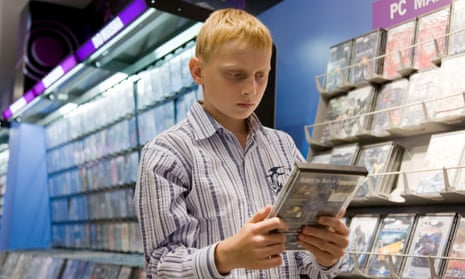Children aged 15 in the UK spend on average £25 a week mainly on clothes, shoes, school dinners and soft drinks, according to research by the Office for National Statistics.
Expenditure among 15-year-olds is more than three times that of seven-year-olds, who spend £7.40.
The figures, published as part of the Family Spending report, show for the first time since 2004 how children behave as consumers. The average spend among those aged 13 to 15 from 2002 to 2004 was £20.40 a week compared with £7 for those aged seven to nine.
In the latest research, the analysis showed that 56% of children aged seven to 15 bought at least one soft drink in a two-week period, and mainly consumed them away from home.
It found the average spend on clothing and shoes among children aged seven to 15 was about £1.80 a week, while on school dinners it was almost a £1.
The older children were, the more likely they were to buy soft drinks; 75% of 13- to 15-year-olds bought at least one drink, such as fruit juice or lemonade, compared with 58% of 10- to 12-year-olds and 38% of children aged between seven and nine. The data also showed 48% of all young people bought confectionery.
Children aged between seven and 15 were asked to keep a diary of their spending over a two-week period, as well pocket money, presents they received or a job such as a paper round.
On average, children aged between seven and 15spent £12.40 a week and the amount they spent increased with age.
Data for 2015 to 2017 showed that girls and boys aged seven to 12 spent broadly similar amounts. The gap widened as they entered their teenage years, with girls spending on average £2.80 a week more.
There was a big difference in the money that went on toiletries and cosmetics. Boys of all age ranges spent less than 10p a week on products such as soap and shampoo with only 2% purchasing at least one of these items, compared with 17% of girls.
In contrast, outlay on toiletries and cosmetics by girls increased with age; seven- to nine-year-old girls spent 20 pence a week, rising to £1.70 for girls aged 13 to 15.
Other items that had notable differences between the sexes were books, computer games and software.
Average weekly spending on books by girls aged seven to 15 was nearly double that of their male peers, 30p compared with 15p respectively. Boys spent more than 10 times the amount on computer games and software, £1.10 a week, compared with girls, who spent 10p.
Games, toys and hobbies was the top spending category for seven- to nine-year-olds, who spent £1.30 a week on average, on items such as jigsaw puzzles, teddy bears and card games.
A quarter of children aged between seven and nine bought at least one item that fell into this category, compared with 14% of 10- to 12-year-olds and 5% of 13- to 15-year-olds.
The report said: “As well as low-cost items such as soft drinks, sweets and games, we see that children bought more expensive items. Some of the more common expensive items bought by children in this time period included bikes, mobile phones and personal computers.”
Rose St Louis, a savings expert at the insurance firm Zurich UK, said parents should teach their children how to manage their finances from an early age.
“It’s important for children to understand that just because you have money, doesn’t mean it needs to be spent all at once. Think about opening a savings account so they can watch their pocket money grow. Doing so will likely encourage them to save even more too.”
She added: “Helping them to set aside a certain amount every month – much as you will be doing – will not only give them a lesson in budgeting but also teaches them the value of the items they’re buying.”
Samantha Seaton, of money management app Moneyhub,said: “Kids are being given responsibility for money from an early age and this bodes well for their financial future.
“By handing them control over how they spend their money, whether it’s from gifts, pocket money, or a paper round, will empower them to start making decisions about their finances and help them understand the value of saving and deciding what they can live without.”
